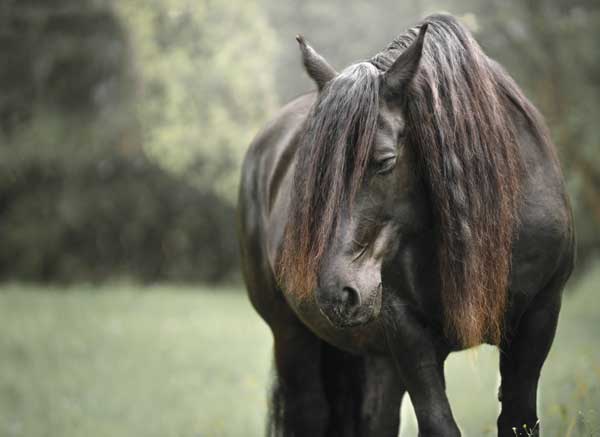
Inevitably there will come a time when your veterinarian will need to sedate your horse. It may be for a routine procedure, such as a dental float, or for something more critical, like suturing a deep gash or treating an infected eye. Regardless of the cause, a sedated horse presents a unique challenge at the barn, and care is needed when working with and around him. Let’s take a closer look at the drugs used, how they work, and how to care for your horse both during and after sedation.
Drugs and Sedation for Your Horse
Standing sedated horses are not anesthetized and remain conscious. Let’s dig a bit deeper to understand what this means.
Although often used synonymously, the terms “sedative” and “tranquilizer” are not quite the same; the difference lies in the drugs used.
The most common tranquilizer used in horses is called acepromazine, frequently shortened to “ace.” Acepromazine produces a calming effect on the horse. It works by blocking the transmission of certain neurotransmitters, like dopamine. It does not block pain and can cause a decrease in blood pressure.
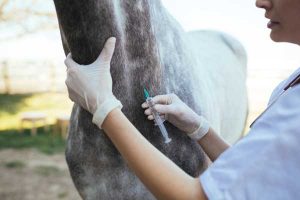
Animals that are already extremely anxious may not respond well to acepromazine and due to its effects on blood pressure, it’s not the drug of choice for sick or senior animals. Because it doesn’t offer any pain control, acepromazine is not typically used for medical procedures. Additionally, acepromazine occasionally causes a condi- tion in stallions and geldings called priapism, or penile paralysis.
In contrast to acepromazine, true sedatives in horses belong to a family of drugs called alpha-2 agonists because they act on alpha-2 receptors in the nervous system. When activated, these receptors trigger muscle relaxation, some pain control, and incoordination of skeletal muscle. The most commonly used alpha-2 agonists for equine sedation include xylazine, detomidine, and romifidine.
The effects alpha-2 agonists have on your horse are stronger than those seen with acepromazine; therefore they are typically used with veterinary procedures. Your veterinarian will typically mix sedatives and give your horse a cocktail of drugs tailored to his size, personality, and the length and strength of sedation that is needed. This helps modulate each drug’s individual effects and gives the best balance of sedation and pain control with the fewest side effects.
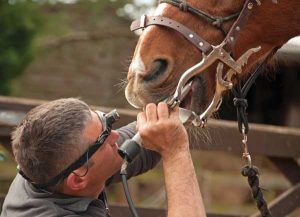
What to Expect
Most equine sedatives are injectable and can be given either in the muscle (IM) or intravenously (IV). A few are also available as an oral paste or gel.
A good rule of thumb to keep in mind when it comes to differences in administration is this: the more direct the route into the bloodstream, the faster the onset and the greater the effect. In other words, an IV drug will take effect within seconds and the horse will show greater signs of sedation than if the same drug were to be given in the muscle or orally. For this reason, in most cases, your veterinarian will administer a sedative IV, typically in the jugular vein of your horse.
As with any medication, not every horse will respond in the same way to a sedative. Donkeys, for example, are well known to be resistant to a “horse dose” of sedation and typically require more, even if their body size is smaller.
Personality plays a big role in how a horse responds to sedation; highly strung or feisty animals will need a larger dose than a more stoic individual. The classic example is the occasional Shetland pony that requires the same dose of xylazine as a Clydesdale!
Although a sedated horse’s eyes will droop, his ears will still flick toward sounds. This is a key safety reminder that a sedated horse is still conscious and is still able to react to loud, unexpected sounds or sudden movement. In fact, a sedated horse may overreact unpredictably to a loud noise because the drugs have hampered his ability to respond in a measured manner.
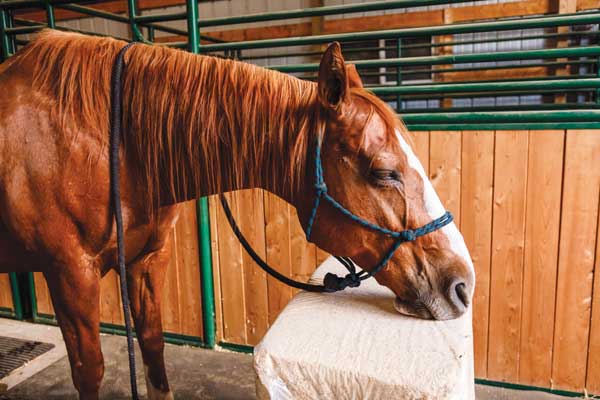
Once the medication has taken effect, a sedated horse will adopt a stereotypical head down or “saw horse” position: he will stand with a base-wide stance for balance and his head will drop low, sometimes to the point of almost touching the ground.
Although a sedated horse’s eyes will droop, his ears will still flick toward sounds. This is a key safety reminder that a sedated horse is still conscious and is still able to react to loud, unexpected sounds or sudden movement. In fact, a sedated horse may overreact unpredictably to a loud noise because the drugs have hampered his ability to respond in a measured manner.
In particular, xylazine is not typically used as the sole sedative for procedures involving the hind legs; horses have been known to kick while under this type of sedation. For these reasons, it is crucial to always act cautiously and deliberately around a sedated horse and to alert others in the barn to what is going on. Additionally, never leave a sedated horse tied unattended.
When the horse’s head is low, his lower lip will droop, and some horses may even drool. Occasional twitching of the lip, bobbing of the head, or swaying side to side may also be seen.
If the horse is asked to move, he will walk in a very uncoordinated manner, and it may appear as if he is likely to fall. Although falling while sedated rarely happens, it could, especially if the horse stumbles and is unable to catch himself. For this reason, it’s best to avoid having to move a sedated horse. Keeping the immediate area free of obstacles, like buckets, stall cleaning equipment and power cords is also vital for everyone’s safety.
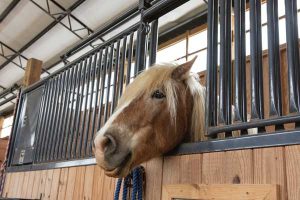
Recovery
In general, most sedatives given IV will last about 30 to 40 minutes, but this depends heavily on the dose and drug given. Sedatives can be re-dosed if a longer period of sedation is required for a procedure.
As the drug starts to wear off, you’ll see your horse become gradually more aware of his surroundings. His head will rise, and he will become more responsive and may want to move forward. As this point, he should be considered mildly sedated, and safety practices such as quiet handling should still be in effect.
Once the medical procedure is finished, the immediate area cleaned of debris and tools, and the horse is able to raise his head, he can be moved if needed.
It’s best to house a horse recovering from sedation alone in a stall or small pen. He’s still not awake enough to interact with other horses or to eat, so make sure buckets and hay are removed from the immediate area. Keep the aisle quiet, and turn off any overhead lights if possible.
Check on your horse periodically and over the next hour or two. You will notice a gradual return to his normal observant self. After a few hours, when it appears your horse is again steady on his feet and appropriately responsive to outside noises, it is safe to offer him hay and water.
Once his coordination returns and he can walk and turn without dragging his feet or stumbling, he can be turned out with pasture mates. By the next day, your horse should be completely back to normal and back to his usual routine.
This article on horse sedation originally appeared in the December 2019 issue of Horse Illustrated magazine. Click here to subscribe!






